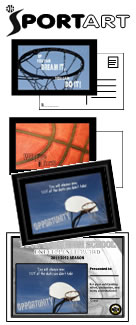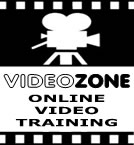 Scoring is the ultimate objective in basketball. Good shooters spend endless hours on the court perfecting their shots. Basketball players of all ages should practice their shooting constantly. As with any aspect of basketball technique, practice is important. Scoring is the ultimate objective in basketball. Good shooters spend endless hours on the court perfecting their shots. Basketball players of all ages should practice their shooting constantly. As with any aspect of basketball technique, practice is important.
Shooting Drills
Shooting Videos
I have found that there many basketball shooting DVDs, books, and programs on the market today and most have great information. The problem is sometimes there is too much information in some or this one lacks this or that, etc. So what I have done is compiled this eBook to give our HOOPZONE campers just enough to get you on the right track to becoming a great shooter. You’ll find all the fundaments in a simplistic format, troubleshooting guide, shooting charts and drills to use.
xxPUREHOOP SHOOTING eBOOK, INCLUDES:
xx  Form and Technique Form and Technique
xx  Coach Your Own Shot Coach Your Own Shot
xx  Shooting Errors Shooting Errors
xx  Daily Shooting Chart Daily Shooting Chart
xx  Shooting Evaluation Form Shooting Evaluation Form
Stationary Basketball Shooting Form and Technique
From HOOPZONE's PUREHOOP Shooting eBook
Below you will find the form and mechanics of stationary shooting. This section does NOT address the fundamentals of shooting on the move and more advanced footwork you'll need for game situations, only the form. Pay special attention to these fundamentals and come back often when you think your shot is in need of a tune up.
Here are the fundamentals that we'll be covering:
1. EYES ON TARGET
2. STANCE AND BALANCE
3. SHOT POCKET
4. GRIP
5. BALANCE HAND
6. DELIVERY
7. UPFORCE AND LANDING
8. FOLLOW-THROUGH
EYES ON TARGET
• To improve accuracy, locate the target (rim) as early as possible.
• Keep your eyes on the target and do not follow the flight of the ball.
• Keeping your target focus is very important!
STANCE AND BALANCE
• Feet are shoulder width apart for good balance.
• Feet should be in a slightly staggered stance that is consistent and comfortable for you. Your shooting foot is slightly ahead of the non-shooting foot in a comfortable position.
• Point your feet in the general direction of the basket, but not necessarily directly at it. We prefer an open stance, but you can also use the closed (squared) stance if that's more comfortable for you. With an open stance, your feet point towards one side of the basket. For example, a right handed shooter will point his or her feet just to the left of the rim for a more natural position and shooting motion.
• Once you develop a comfortable stance, line up your feet the exact same way on every shot . Whatever stance you use, consistency is critical.
• Flex/bend your knees on every shot.
SHOT POCKET
• As you catch the ball, move it quickly into the shot pocket.
• Line everything up so the ball and your shooting eye form a straight line to the basket. This is VERY important.
• Position the ball several inches above your waist.
• Grip the ball properly and be ready to shoot.
• Position the ball in your shot pocket the SAME way every time you catch it.
GRIP
• Line up your fingertip pads parallel to the long seams of the ball, so you can monitor the back spin.
• Leave space between the ball and the middle of your palm. You should be able to insert a pencil between the ball and your palm area.
• Spread your fingers far enough apart to comfortably balance the ball in one hand.
• The ball should sit on your finger tips and finger pads.
BALANCE HAND
• Your balance hand (non-shooting hand, guide hand) should be on the side of the ball.
• Your balance hand should not add force or spin to the shot.
• Your non-shooting hand should not move on delivery and should ALWAYS come off the ball FIRST.
DELIVERY
• The ball should start motion directly upwards from the shot pocket (no dipping of the ball).
• Your elbow should be positioned comfortably under the ball.
• The ball stays in front of you and should not go behind your head.
• Uncoil your body with your legs, core, and arm power all coordinated.
• Your elbow and wrist should extend in a straight line to the basket.
• Your shooting hand should extend in a straight line to the rim.
• Hand position on delivery is very important. The ball should come off the hand with perfect symmetrical backspin.
• As shown in the picture to the right, your guide hand stays to the side and does not influence the flight of the ball.
UPFORCE AND LANDING
• Release the ball on the way up, just before the top of your jump.
• Use your legs to generate upforce.
• You should land in the same spot that you jumped, which shows that you have good balance on your shot.
FOLLOW-THROUGH
• Your wrists should be floppy (relaxed).
• Fingers should be pointed at the target (rim).
• Finish high. You should see your fingers at the top square of the back board.
• Hold your follow through position until the ball hits the rim.
• Proper arc in a shot makes the ball come in more of a downward motion at the rim, thus a better chance of going in. All the mechanics of the shot may be correct, but if the arc is low, the percentage of going in will be low.
• Increased shooting arc can be achieved by making sure that the shooting forearm goes up instead of out towards the basket, and holding the shooting arm up as a follow through. Use your wrist to guide the ball towards the basket not so much your arm.
• Look at left to see how small the rim gets when the ball comes in flat, or low arc. 60 to 70 percent is a great angle for the ball to come through the basket.
• Then rim, or basket, is huge providing you shoot with the proper arc. The basket is so big that two women's size balls can fit through the rim side by side at once as shown below.
SHOOTING ERRORS AND CORRECTIONS
From HOOPZONE's PUREHOOP Shooting eBook
Let's take a look at some common problems that you can spot in your young athletes shooting techniques and what causes them.
1. Oblong ball rotation:
This is where the ball will have an oblong or sideways rotation to it. Factors that cause this to happen are:
a. Incorrect feet placement and an incorrect center of gravity.
b. The guide hand was improperly placed, interfering with the shot on the release.
c. Poor shooting-hand placement which interfered with the shot. This is commonly referred to as "thumbing the ball".
2. Flat rotation or no rotation:
This is where the ball has little or no rotation. The shooter has eliminated all of the above problems, but still has more to correct:
a. No follow through. The shooter did not snap their wrist at the apex of their shot. This is usually caused by a bad release point, which is generally caused by pushing the ball. They are usually, but not always interconnected, but usually are.
b. "Pushing the ball". This is very common and is very prevalent in new campers. Changing this one bad habit will dramatically improve an athlete's shooting percentage.
3. Flat shot:
The shot takes a low-angle path to the basket, rather than a high arc which provides a larger target. (See diagram “Proper Shooting Form”.)
This is caused from pushing the ball, which is often the result of the shooter being outside their shooting range or poor follow through. Increased shooting arc can be achieved by making sure that the shooting forearm goes up instead of out towards the basket, and holding the shooting arm up as a follow through. Always shoot within your comfortable distance.
4. Ball consistently misses to the right or to the left:
a. Shoulders are not square to the basket.
b. "Thumbing" the ball.
c. Feet are planted too close together when moving east to west or west to east, resulting in unstable balance. In this situation, the player is essentially falling in the same direction they are moving when they decide to pull up and shoot.
d. Elbow out instead of aligned on close.
e. Positioning the ball in front of the face, thus creating bad alignment.
f. Fingers on the shooting hand are positioned too close together on the ball.
g. The shooting hand is improperly placed on the ball.
h. Feet are not pointing at the basket.
i. Moving the head to the side, caused by bad alignment.
5. The ball consistently comes up short:
a. Shooting from beyond a player's range.
b. Falling backward while making the shot.
c. Shooting while the weight is over the heels, rather than the balls of the feet up through the toe. A very common balance problem.
6. The ball consistently goes long
a. Pushing the ball.
b. Shooting from beyond a player's range.
Time to get to work,
Coach O
|





 Scoring is the ultimate objective in basketball. Good shooters spend endless hours on the court perfecting their shots. Basketball players of all ages should practice their shooting constantly. As with any aspect of basketball technique, practice is important.
Scoring is the ultimate objective in basketball. Good shooters spend endless hours on the court perfecting their shots. Basketball players of all ages should practice their shooting constantly. As with any aspect of basketball technique, practice is important.